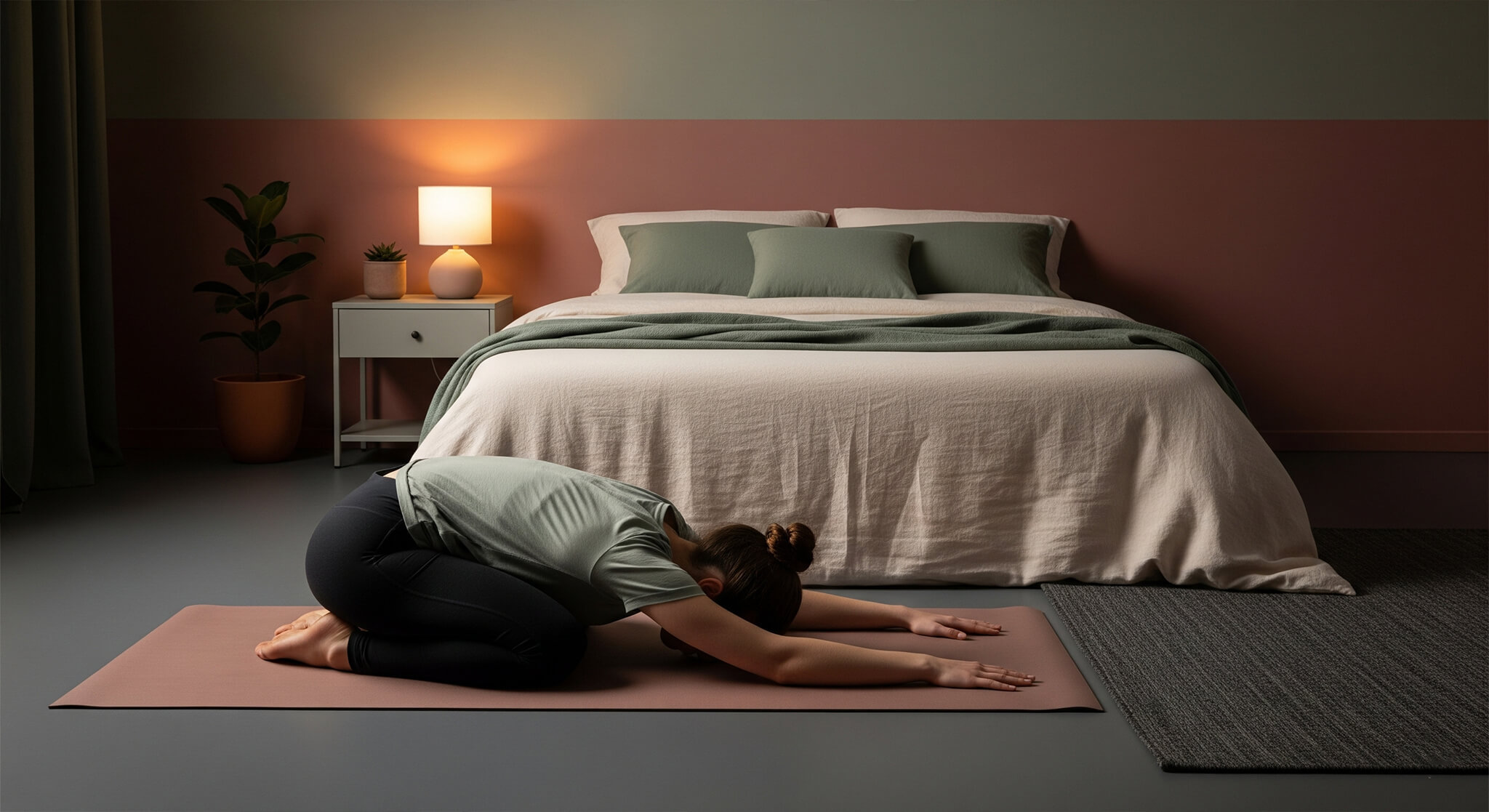Does Evening Yoga Really Help Calm the Mind and Body for Sleep
Table of contents
The Struggle to Find the “Off Switch” for a Busy Mind
The day is officially over. Your body is physically tired, but your mind is still running at a hundred miles per hour. You find yourself mentally replaying conversations from the day, drafting tomorrow’s to-do list, and feeling a low-grade hum of anxiety about the future. For many of us, finding the “off switch” for our brain is the biggest barrier to a good night’s sleep.
This is where the ancient practice of yoga, when applied mindfully in the evening, can be a true game-changer.
But is a gentle pre-bed yoga session just a nice way to stretch, or does it have a real, scientifically-proven effect on your ability to fall asleep and achieve restorative deep sleep? The answer from the scientific community is a resounding yes. Here’s how it works.
The Science: How Yoga “Downshifts” Your Nervous System
To understand why evening yoga is so effective, you need to understand your nervous system’s two primary modes.
Activating Your “Rest and Digest” System
Throughout our busy days, most of us operate in a “fight-or-flight” state, which is governed by the sympathetic nervous system. This state is fueled by the stress hormone Cortisol and keeps us alert, reactive, and ready for action. To fall asleep, however, we must activate the opposite state: the “rest and digest” mode, which is controlled by the parasympathetic nervous system.
Yoga as the Body’s “Brake Pedal”
A gentle evening yoga practice is one of the most effective ways to manually apply the brakes on your stress response and shift into that restful state. It does this in three key ways:
- Deep Breathing (Pranayama): The slow, deep, diaphragmatic breathing that is central to a calming yoga practice is the most powerful signal you can send to your brain to switch from stress to rest. It physically slows your heart rate, lowers your blood pressure, and calms the entire system, primarily by stimulating the vagus nerve to signal the parasympathetic nervous system.
- Gentle Stretching: Slow, mindful stretching helps to release the physical tension that has built up in your muscles throughout the day from sitting and stress. Releasing this physical tension sends further signals of safety and relaxation to your brain.
- Mindfulness: The gentle focus required to move through the poses acts as a form of meditation. It anchors your racing mind in the present moment, interrupting the cycle of anxious thoughts about the past or future.
The Perfect Pre-Sleep Yoga Practice: What to Do (and What to AVOID)
Not all yoga is created equal when it comes to sleep.
DO Focus on These Pose Families:
- Forward Folds (like Child’s Pose): These poses are naturally calming, introspective, and soothing for the nervous system.
- Gentle Twists (like a Supine Spinal Twist): These help to release tension built up along the spine from a long day.
- Restorative Inversions (like Legs-Up-The-Wall): This is one of the most powerful poses for calming the entire system and is fantastic to do right before bed.
AVOID These Pose Families:
This is crucial. In the evening, you must avoid anything that is overly stimulating or energy-building. This includes vigorous, fast-paced Vinyasa flows, deep backbends (like Wheel Pose), or energizing inversions like Headstand. The goal of your evening practice is to wind down, not to get a workout in.
The 5-Minute “Emergency” Bedtime Routine
Don’t have the time or energy for a full session? Just do these three simple movements in or next to your bed as the final step of your night routine.
- Cat-Cow Stretch (2 minutes): On your hands and knees, or even seated on your bed, gently arch and round your spine in time with your breath to release tension.
- Knees-to-Chest (1 minute): Lie on your back and hug your knees into your chest to gently release your lower back.
- Legs-Up-The-Wall (2 minutes): The ultimate ‘off switch.’ Lie on the floor and rest your legs up against the wall. This pose is incredibly calming for the entire nervous system.
The Verdict: A Powerful, Science-Backed Sleep Aid
So, does evening yoga really work for insomnia? Yes. It’s not just “stretching.” It is a powerful, science-backed practice that actively shifts your nervous system out of a state of high alert and into a state of deep rest.
By incorporating even just a few minutes of mindful movement and deep breathing into your nightly ritual, you are not just preparing your body for sleep. You are sending a powerful message to your mind that the day is done, and it is safe to let go. It’s a profound act of self-care for your mental health that can lead to the deep, restorative sleep you deserve.






